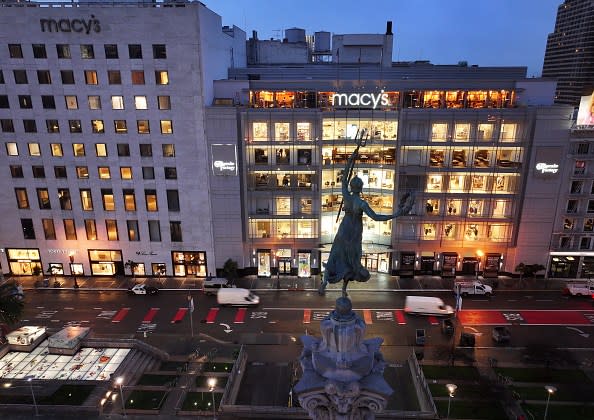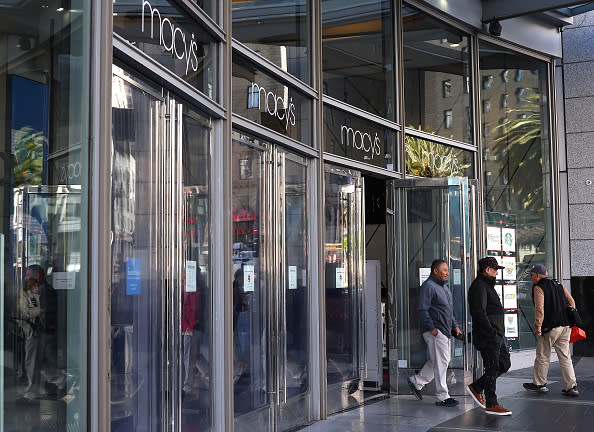Macy’s Seen Closing San Francisco Flagship

The Macy’s San Francisco flagship, once a bastion of business for the department store chain, appears headed for closure.
The shutdown is seen as part of Macy’s Inc.‘s plan to close 150 underperforming stores beginning next year, leaving the retail brand with 350 department stores. The mass closing plan was disclosed Tuesday.
More from WWD
While closing many stores, Macy’s Inc. continues to roll out its off-mall formats which include Bloomie’s, Bloomingdale’s outlet, the specialized and downsized Macy’s units, and Backstage off-price units.
Macy’s bought May Co. department stores 18 years ago, doubling Macy’s size to about 950 stores. Since then the company has been closing stores off and on, most of which are former May Co. units. Macy’s San Francisco was not part of that acquisition.
Asked to confirm the San Francisco closing, a Macy’s spokesperson provided WWD with the following statement: “Our new strategy is designed to create a more modern Macy’s Inc. and enhance the customer experience. We intend to close approximately 150 Macy’s stores while further investing in our 350 go-forward fleet over the next three years. A final decision on specific locations has yet to be made.”
San Francisco media first reported that Macy’s San Francisco would close.
It’s possible that Macy’s sells the San Francisco real estate soon but leases it back for a short period until closing it. The soonest Macy’s could close the San Francisco flagship would be in 2025. The flagship comprises a series of interconnected buildings amounting to more than one million square feet. Over the years Macy’s poured millions of dollars into renovations and expansions at the site.
The retailer would hope to sell off the San Francisco real estate as part of its announced objective to monetize $600 million to $750 million of assets through 2026, mostly through selling off stores, outparcels such as parking lots, as well as some logistic centers.
San Francisco has been blighted by the pandemic, crime and declining foot traffic and tourism, resulting in the departure of a few dozen downtown stores including Nordstrom, Nordstrom Rack, Anthropologie, Old Navy, Adidas, Express and Whole Foods. However, some retailers continue to invest in the city including Banana Republic, Levi Strauss and Ikea with recent openings.
Macy’s is under pressure from Arkhouse and Brigade Capital Management, which recently bid $5.8 billion to buy Macy’s Inc. Macy’s rejected the offer. The activists in February launched a proxy fight with Macy’s by submitting nine individuals to stand for election to the retailer’s board of directors at the company’s 2024 annual meeting. But Macy’s showed support for its board, calling it diverse, experienced and engaged.
Macy’s Inc.’s latest financial results included a fourth-quarter net loss of $71 million compared to a profit of $508 million in the year-ago quarter. However, on an adjusted basis, net income rose to $685 million last quarter from $524 million in the year-ago quarter.
The retailer’s profit picture was significantly impacted by a $1 billion impairment charge, $950 million of which was related to the approximate 150 locations seen closing over the next three years.
During the fourth quarter, which ended Feb. 3, Macy’s Inc. generated net sales of $8.1 billion, down 1.7 percent from $8.3 billion in the year-ago quarter.

Best of WWD
